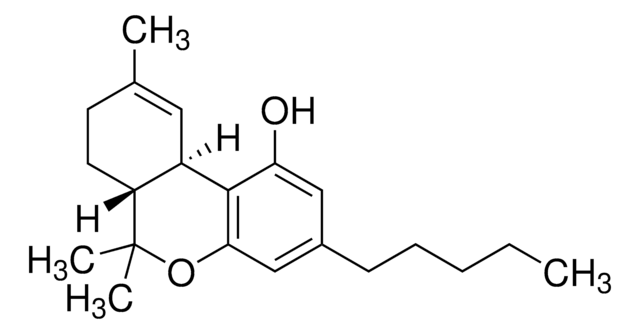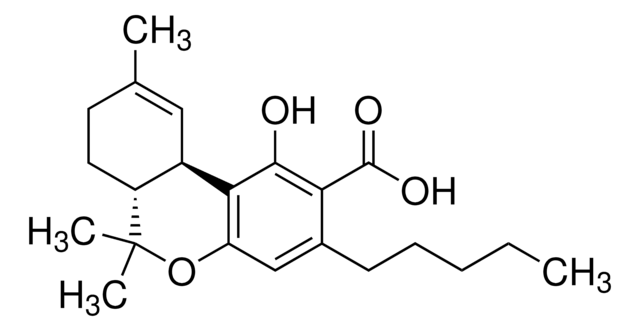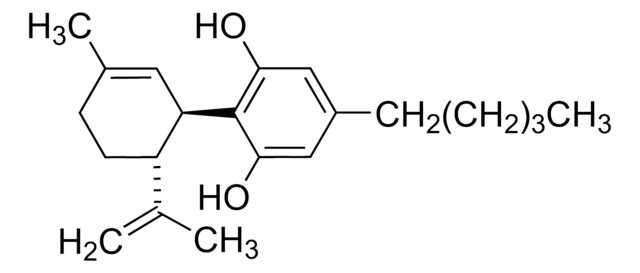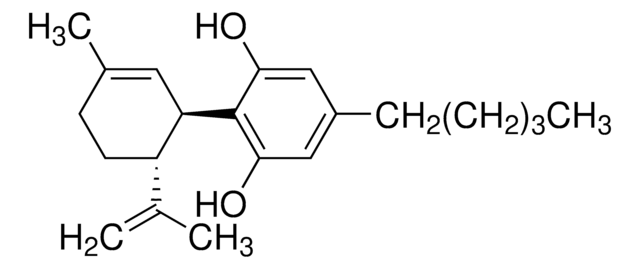About This Item
推荐产品
表单
ethanol solution
质量水平
药品控制
USDEA Schedule I; Home Office Schedule 2; stupéfiant (France); kontrollierte Droge in Deutschland; regulated under CDSA - not available from Sigma-Aldrich Canada; psicótropo (Spain); Decreto Lei 15/93: Tabela IIB (Portugal)
浓度
25 mg/mL (+/- 5%)
储存温度
−20°C
SMILES字符串
[H][C@@]12CCC(C)=C[C@@]1([H])c3c(O)cc(CCCCC)cc3OC2(C)C
InChI
1S/C21H30O2/c1-5-6-7-8-15-12-18(22)20-16-11-14(2)9-10-17(16)21(3,4)23-19(20)13-15/h11-13,16-17,22H,5-10H2,1-4H3/t16-,17-/m1/s1
InChI key
CYQFCXCEBYINGO-IAGOWNOFSA-N
基因信息
human ... CNR1(1268) , CNR2(1269)
mouse ... Cnr1(12801)
rat ... Cnr1(25248)
正在寻找类似产品? 访问 产品对比指南
应用
生化/生理作用
特点和优势
制备说明
警示用语:
Danger
危险声明
危险分类
Eye Irrit. 2 - Flam. Liq. 2
储存分类代码
3 - Flammable liquids
WGK
WGK 2
闪点(°F)
57.2 °F
闪点(°C)
14 °C
个人防护装备
Eyeshields, Faceshields, Gloves, type ABEK (EN14387) respirator filter
法规信息
我们的科学家团队拥有各种研究领域经验,包括生命科学、材料科学、化学合成、色谱、分析及许多其他领域.
联系技术服务部门





